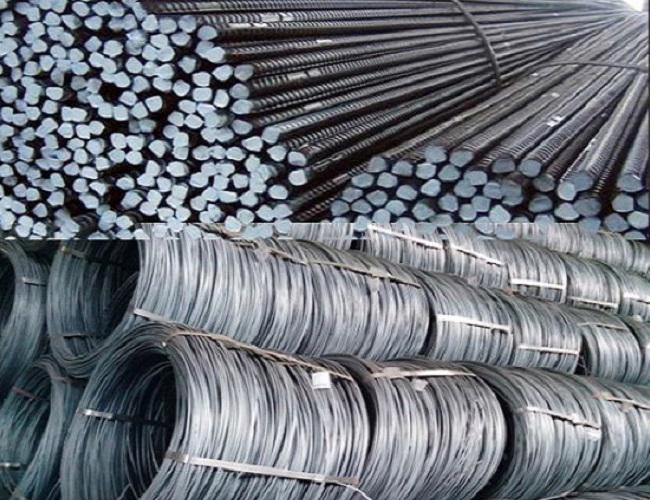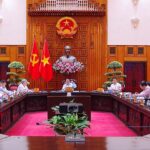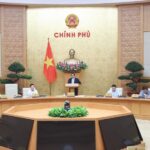## Vietnam’s Steel Industry: Navigating Challenges for Growth
According to data from the Vietnam Steel Association (VSA), in Q1/2025, crude steel production reached 5.81 million tons, an increase of 9.1%, while finished steel production attained 7.464 million tons, up by 5.7% compared to the same period last year. The total steel sales volume in the domestic market during Q1/2025 reached 7.501 million tons, a significant surge of 12.2% from Q1/2024.
ROBUST STEEL PRODUCTION AND DOMESTIC CONSUMPTION
VSA attributed the primary driver of domestic consumption to the disbursement of public investment capital. According to the Ministry of Planning and Investment, the disbursement rate of public investment capital in Q1/2025 is estimated at 17.6%, 2.8 percentage points higher than the same period last year. Large infrastructure projects, such as the North-South Expressway Phase 2, Long Thanh Airport, and the ring roads of Hanoi and Ho Chi Minh City, have created strong demand for construction steel.
Among the steel segments, construction steel witnessed exceptional growth: production reached 3.003 million tons, a 10.6% increase, while sales hit 3.075 million tons, up by 19.9%.
Hoa Phat maintained its leading position in the construction steel market in Q1/2025, with a volume of 1,191,729 tons, capturing a market share of 38.76%. Vietnam Steel Corporation (VNSteel) ranked second with 355,660 tons, accounting for 11.57% market share, followed by Viet Duc, Vinakyoei, and POSCO Yamato Vina.

In other segments, steel pipe production reached 579,000 tons, a 6.9% increase, while sales attained 626,000 tons, up by 18.1%. Hoa Phat remained the leading producer in terms of volume, capturing a 29.65% market share of steel pipes.
Sales of other steel products also increased, such as hot-rolled coil (HRC) sales reaching 1.909 million tons, a 9.2% rise (despite a slight 1.3% dip in production), and cold-rolled coil (CRC) sales hitting 694,000 tons, a substantial 21% increase.
However, sales volume of coated steel products in Q1/2025 stood at 1.196 million tons, a 5.6% decrease compared to the previous year.
Domestic prices for construction steel in Q1/2025 fluctuated around VND 13.6-14 million/ton, with a slight increase of VND 50-100/kg in March.
EXPORT DECLINE DUE TO TRADE PROTECTIONISM
In contrast to the vibrant domestic market, Vietnam’s steel exports in Q1/2025 faced significant challenges. Specifically, steel export volume reached 1.745 million tons, an 18.83% decrease compared to the same period last year. Notably, exports of finished steel products plunged to 1.414 million tons, a sharp 37.2% decline year-on-year.
VSA attributed this downturn to several factors: the expansion of tariffs under the US Trade Expansion Act 232, stricter trade protection measures imposed by the EU, and India’s safeguard measures on coated steel and cold-rolled steel.
Coated steel products bore the brunt of these measures, witnessing a 41.5% drop in export volume. HRC exports also took a hit, reaching only 198,000 tons, equivalent to 26.5% of the previous year’s volume.
Additionally, there were slight fluctuations in the international raw material price landscape during Q1/2025. The average price of 62% Fe iron ore in March 2025 stood at USD 102.4/ton, a 6.5% decrease compared to March 2024. The average price of Australian coking coal FOB in March 2025 was USD 223.9/ton, a substantial 36.5% drop from the previous year.
VSA noted that the decrease in raw material costs helped domestic businesses reduce production expenses. However, international prices for finished steel products remained low: the price of HRC CFR Vietnam on April 8, 2025, was recorded at USD 510/ton, significantly lower than expected at the beginning of the year.
“Amidst intensifying global competition and signs of slowing consumption, many Vietnamese steel enterprises have been compelled to adjust their export strategies, focusing more on the domestic market or seeking niche markets,” VSA assessed.
LARGE STEEL ENTERPRISES: RESTRUCTURING AND ADAPTING
Amid the slowdown in the export market, leading Vietnamese steel enterprises are proactively restructuring their product portfolios and consumption markets.
Hoa Phat maintained its dominant position, with total sales volume of various steel products (construction steel, HRC, and steel pipes) surpassing 1.9 million tons in Q1/2025. In recent years, Hoa Phat has shifted its market focus, reducing exports and ramping up domestic consumption, particularly in key public investment projects.
Meanwhile, Hoa Sen Group (HSG) proactively redirected its export market from the US and Europe to Southeast Asia and South Asia to mitigate the impact of trade barriers. The export volume of coated steel products to Southeast Asia increased from 30% to 45% in Q1/2025.
Another prominent steel enterprise, Nam Kim (NKG), concentrated on value-added products like pre-painted galvanized steel (PPGI) to enhance profit margins amidst volatile HRC prices.
Industry experts believe that enterprises with robust financial capabilities, diverse product ranges, and agile market strategies will be better positioned to sustain growth in this evolving landscape.
STEEL MARKET OUTLOOK FOR Q2/2025: A MARATHON OF ENDURANCE
According to VSA, the Vietnamese steel market in Q1/2025 presented a stark contrast: robust domestic consumption fueled by public investment and rebounding demand, while exports grappled with the weight of global trade protectionism.
Q1/2025 proved to be a challenging period for Vietnam’s steel industry, marked by the dichotomy of domestic growth and export hurdles stemming from trade protectionist policies: the expansion of the US Trade Expansion Act 232 and countervailing duties; the EU’s impending updates to trade defense instruments in March, effective from April 1; and India’s anticipated new policies on steel imports in March. These are among the top export destinations for various Vietnamese steel products in recent years. Consequently, the volume and value of exports of steel products (HRC, coated steel, steel pipes, etc.) have experienced and will continue to face significant fluctuations.
Looking ahead to the growth prospects for Vietnam’s steel industry in Q2 and the second half of 2025, VSA believes that the sector’s performance will hinge significantly on the pace of public investment disbursement and infrastructure development projects in transportation and public works. With Vietnam targeting an economic growth rate of 8% in 2025 and aiming for double-digit growth in the 2026-2030 period, the demand for steel from the construction and manufacturing sectors is anticipated to remain on a stable upward trajectory.
However, the Vietnamese steel market is also susceptible to fluctuations in the global raw material market and international trade policies, especially with the impending US import tariffs under the new trade framework, which will take effect after a 90-day postponement of the highest countervailing duty rates.
Thus, the Vietnamese steel market in Q2/2025 will continue to be a marathon of endurance, necessitating resilience and agility from industry players.
VSA recommends that to sustain growth momentum, Vietnamese steel enterprises should proactively seek and develop new export markets to reduce reliance on traditional markets affected by protectionist measures. Emphasizing product quality enhancement, cost reduction, and vigorous trade promotion activities is also crucial. Additionally, capitalizing on the demand for steel from public investment projects and the domestic construction market is essential. Furthermore, collaborating closely with VSA to present a united front in international trade matters and closely monitoring market dynamics to facilitate timely strategic adjustments in production and exports are imperative.
The Green Revolution: Celebrating 50 Years of Vietnam’s Agricultural Excellence
Over the past five decades, Vietnamese agriculture has witnessed remarkable progress, evolving from a state of significant scarcity to a country that ensures domestic food security and contributes to global food security as a leading rice exporter. With food security assured, Vietnamese agriculture has gradually transitioned from rice monoculture to a relatively comprehensive agricultural development approach.
The Coffee Conundrum: Brewing the Perfect Investment in Vietnam’s “Golden Land”
The Vietnamese coffee market is witnessing a surge of investments from both domestic and foreign industry giants. The rapid expansion of retail networks and the establishment of large-scale factories reflect the immense attraction of a market that is experiencing robust and rapid growth.





















